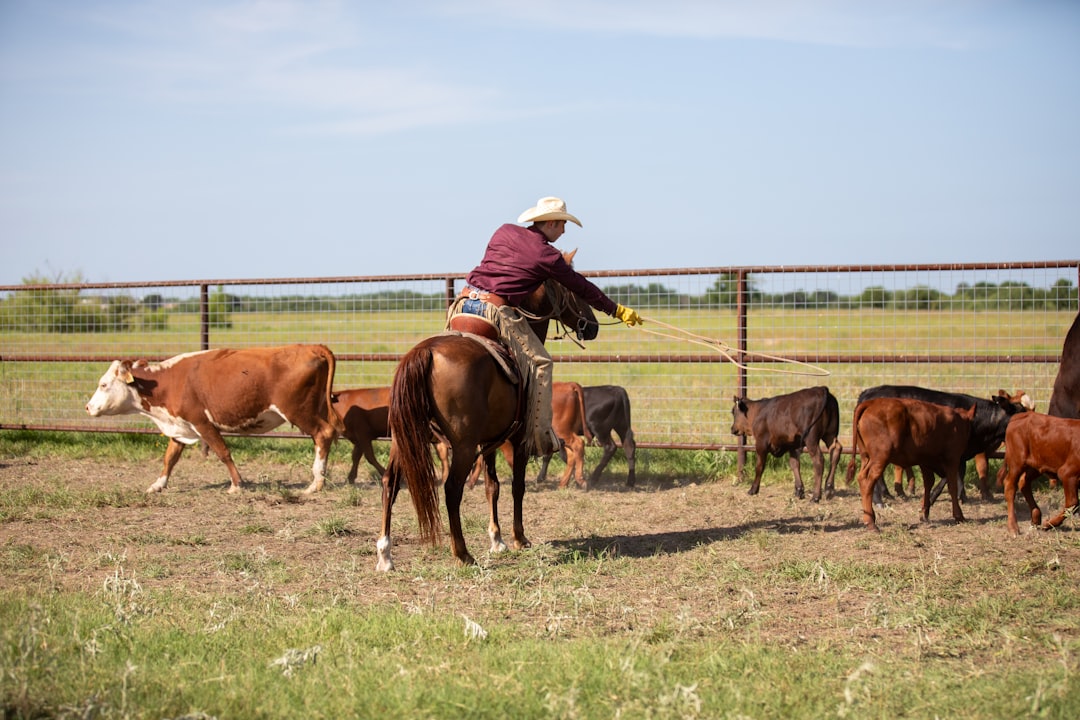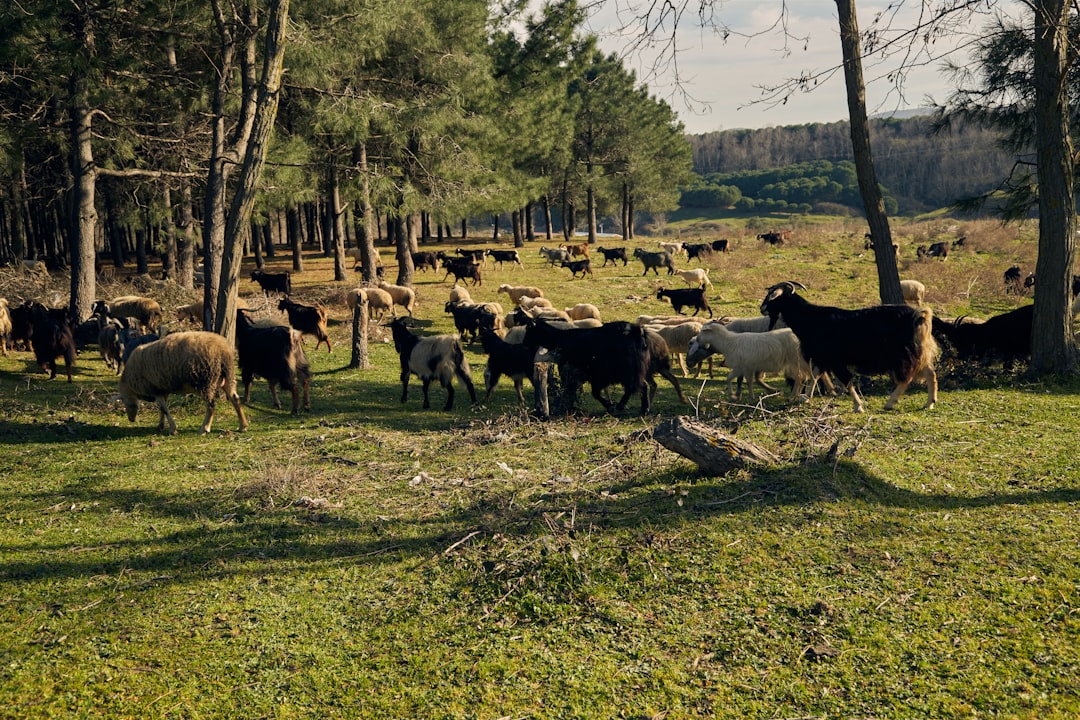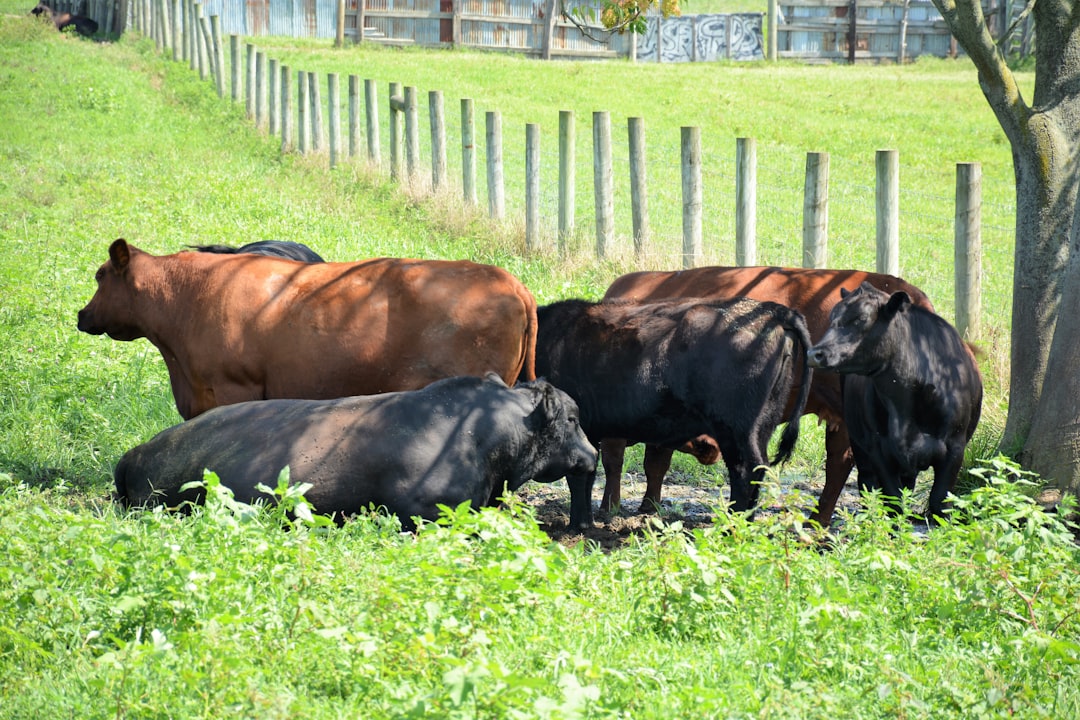

Engage prospects with a scan and streamline customer engagement with FREE QR code marketing tools by Sona – no strings attached!
Create a Free QR CodeFree consultation

No commitment

Engage prospects with a scan and streamline customer engagement with FREE QR code marketing tools by Sona – no strings attached!
Create a Free QR CodeFree consultation

No commitment
Cattle farming operations are evolving rapidly, yet many industry leaders still encounter a disconnect between day-to-day tasks and strategic, data-driven decision-making. One persistent frustration is missing out on high-value buyers and partners simply because their engagement with farm marketing materials, events, and property signage is not tracked, resulting in lost opportunities and inefficient follow-up. In an industry striving for efficiency, traceability, and actionable insights, bridging the gap between offline workflows and digital data is now mission critical. For context on QR-driven outreach in farm settings, see agricultural marketing from Penn State Extension.
QR codes have transitioned from a novelty to a must-have tool, offering a practical bridge between physical cattle operations and actionable digital insights. With a single scan, farmers and staff can instantly access or share dynamic herd data, retrieve updated certifications, and streamline regulatory paperwork, addressing the longstanding headache of error-prone, paper-based record keeping. For marketers and managers alike, connecting with buyers and tracking engagement can finally move beyond guesswork, as tangible data from physical touchpoints provides the transparency needed to prioritize real opportunities. See QR codes in marketing.
Embedding QR codes at key touchpoints throughout a cattle operation not only supports compliance and transparency, but also equips teams to identify and engage prospects who previously remained anonymous. Savvy producers now use QR-driven insights to segment high-intent leads, attribute offline actions to digital conversions, and adapt their outreach to those most likely to convert. QR codes can transform pain points into measurable improvements for sustainable, efficient livestock management and business growth. Browse Sona QR’s use case library for ideas.

Paper logs, siloed health records, and scattered event forms often result in missing or outdated account data, making it difficult to provide timely care, prove traceability to buyers, or follow up with high-potential leads. This lack of account-level granularity leaves teams frustrated as valuable engagement signals go untracked and prospects slip through the cracks. When the veterinary team is in the field and the sales manager is at an auction, the delay between observation and data entry can erase critical context that would have driven better decisions.
Modern QR code solutions directly address these pitfalls by digitizing every facet of cattle management, from health events to staff onboarding. The transition from manual forms to digital records cuts documentation errors, improves data accuracy, and reveals engagement patterns across departments. It equips managers to move beyond capturing interest and toward understanding it in context, so follow-up is timely and relevant. Teams can link every scan to a purpose: a vaccination update, a compliance proof, a reorder request, or a buyer inquiry, then unify it with Sona account identification for richer profiles.
Here is how to maximize value:
For progressive cattle operations, QR codes offer a scalable, immediately actionable strategy for closing data gaps, surfacing high-value prospects, and optimizing processes in real time, even where traditional CRM coverage falls short. Platforms like Sona QR make it simple to generate, manage, and track codes across the ranch while linking offline engagement to online actions and CRM workflows.

A recurring challenge in cattle management is the lack of actionable visibility between offline and online engagement. Buyers might examine facility signage, print auction materials, or branded mailers, yet without a direct follow-up mechanism those high-intent signals remain untapped. Internally, staff often record health checks, feeding adjustments, or maintenance notes on clipboards that never make it into a centralized system, leaving managers without timely insight.
QR codes overcome this hurdle by transforming every product label, event badge, or compliance document into a real-time gateway for capturing interest, retrieving data, and initiating workflows. A ranch hand can scan a pen-side placard to log a health check, a buyer can scan an auction lot card to request documentation, and a service tech can scan equipment labels to open a maintenance log. In multi-site operations, those moments become data points that feed into a single source of truth.
Dynamic QR code systems allow for content or resource updates after initial deployment, reducing waste and ensuring relevance over time. Data gathered from scan activity can be synced with farm management or CRM tools, helping teams react promptly to emerging sales or compliance opportunities without the common issue of outdated or incomplete account records. For materials common to cattle operations such as haul sheets, vet protocols, back-of-house SOPs, or fairground signage, QR codes deliver speed, accountability, and measurable engagement enabled by Sona QR’s product overview.

The problem of disconnected datasets becomes painfully obvious when buyers, staff, or regulators request information that is not instantly accessible. Incomplete contact details, generic landing pages, or missing forms can derail timely follow-up. Choosing the right format for each use case ensures that scans lead to the right action and that data is captured consistently across the operation.
Centralized management through a platform like Sona QR allows these formats to be deployed, monitored, and updated as workflows evolve. Dynamic codes should be the default when you need to edit destinations, capture analytics, or integrate with CRMs, while static codes fit simple, unchanging resources like a fixed PDF.

A constant industry challenge is the invisibility of high-intent engagement at critical moments such as facility tours, trade shows, or product handling. Without clear data trails, follow-ups and upsell opportunities can be missed, and warning signs of churn may go unnoticed. Farmers and marketers alike need to know who is engaging, what they are engaging with, and when they are most receptive to outreach.
QR codes shine when deployed at high-impact touchpoints that naturally generate offline interest. Each scan turns attention into action, revealing which prospects are leaning in and which assets are working. By tagging codes by location, asset type, and campaign, you can translate foot traffic into lead lists and attribute outcomes to specific moments in the field.
Deploy QR codes at high-impact touchpoints:
By tracking where and when each QR code is scanned, operations move from assumptions to insights. You will pinpoint which auction placements generate the most qualified interest, which equipment types generate support requests, and which compliance documents are most frequently used or ignored.

Cattle operators cite recurring challenges in proving traceability, ensuring consistent training, and identifying which prospects engage with sustainability or quality programs. QR codes translate these high-stakes needs into specific, measurable workflows that remove friction for staff and buyers while producing audit-ready data.
Consider deploying QR codes for the following use cases, each tied to a clear outcome and a measurable metric:
Each use case should be tied to a destination that is mobile-optimized and context-specific. A scan on a squeeze chute needs a different experience than a scan on a trade show banner. Dynamic QR management allows you to fine-tune content and track performance over time.
A recurring pain point is losing touch with high-fit prospects who engage in person or onsite but never leave their contact information. These missed connections rarely reach CRM systems, which skews ad spend and results in generic follow-ups that do not match the buyer’s needs. QR codes capture these micro-moments so you can connect them to personalized journeys.
By deploying purpose-specific QR codes at auctions, field days, equipment lots, or partner meetings, marketers can segment audiences and retarget with precision. The signal from a scan includes location, timing, and content, which can be used to determine buyer stage and interests. With a platform like Sona QR, each code becomes a smart entry point that feeds segments to your CRM and ad platforms automatically. Apply tactics from this retargeting playbook.
In cattle operations, audience distinctions often include cow-calf producers versus feedlot buyers, domestic buyers versus export partners, and veterinary or regulatory stakeholders versus retail customers. Mapping scan patterns to these groups leads to higher conversion rates and better resource allocation.
Missing high-value engagement signals is a top challenge, especially as brochures, direct mail, and event interactions often go unmeasured. The result is an incomplete view of which channels drive revenue or repeat business. QR codes bridge this measurement gap while providing a direct onramp from physical materials to digital actions. Learn more in Sona offline attribution.
Integrating QR codes across your channels does more than generate scans. It creates a connected funnel where every touchpoint is trackable and updateable. The same buyer who scans a booth poster at a cattle expo might later scan a direct-mail postcard. Linking those interactions to a CRM record via Sona QR reveals progression and informs personalized follow-up.
Here is how QR codes enhance your broader marketing strategy:
Centralized QR management unifies these activities, revealing hidden audiences and enabling timely engagement without intrusive data collection. With Sona QR, you can manage codes across teams and locations, monitor performance, and sync scan data into HubSpot CRM, Salesforce, and other systems.
Even well-intentioned QR deployments can fall short if disconnected from strategic goals. Common pitfalls include codes that are hard to scan, destinations that are generic, and a lack of follow-through after engagement. A simple, repeatable execution plan prevents those issues and accelerates adoption across the ranch.
Use the following checklist to launch and optimize QR campaigns that drive measurable results. Each step includes practical considerations for the realities of cattle farming operations, from mud and sunlight to spotty connectivity and multiple stakeholders.
Regular reviews help surface trends, such as which codes underperform due to placement issues, and reveal where new engagement or potential churn warrants personalized follow-up.
Cattle operations often wrestle with fragmented data. Teams know materials were handed out or signage was read, but they do not know who engaged or whether it led to action. This information gap prevents managers from connecting investments to outcomes and makes it hard to justify spend or optimize campaigns.
Advanced tracking changes that picture by tying each scan to a context, a destination, and a result. With Sona QR and Sona.com, you can capture detailed scan data, enrich leads, and link offline engagement to pipeline and revenue. The goal is to move from awareness of activity to clear attribution and action.
With this analytics foundation, teams can finally quantify the impact of offline engagement. You will know which codes produce sales conversations, which documents prevent compliance delays, and which content drives repeat purchases.
Common frustrations such as low scan rates, generic landing pages, and lack of follow-through can undermine even the best QR strategies. Success comes from relevance, clarity, and automation that turns scans into outcomes with minimal friction for the user.
Choose the most practical tips for your operation and deploy them consistently. Over time, even small improvements in scan rate or conversion can compound into significant gains across auctions, parts orders, and compliance workflows.
High-performing operations also get creative. For example, use QR-enabled vet visit summaries to provide instant access to treatment histories, or place QR codes in parts rooms that prefill orders for consumables based on the machine scanned.
A persistent pain point for cattle operators is the inability to capture and convert key moments of buyer engagement, which leads to lost sales and missed follow-ups. Real-world deployments show that QR codes convert those moments into measurable results by putting the right digital resource in the right place.
For inspiration on campus and field use, consider adding scannable pasture maps for visitor tours, placing QR codes on hormone-free or grass-fed signage that link to certification proofs, or using QR codes on invoice footers that open one-click reorder forms for feed or supplements. Each example turns a passive surface into a trackable moment of intent.
Visibility and adoption are the most common stumbling blocks when deploying QR codes in cattle operations. Codes hidden from view, damaged by mud or sunlight, or linked to irrelevant content consistently generate low engagement and undermine trust. These pitfalls are avoidable with practical planning and an iterative mindset.
Focus on the basics first: scannability, relevance, and follow-through. Then build toward advanced tactics like segmentation and predictive outreach. Regular audits will keep your QR program reliable and effective across changing seasons and staff.
QR codes have become a cornerstone for progressive cattle operations, helping to close the longstanding gap between offline activity and actionable digital insights. By embedding these simple yet powerful tools across events, packaging, equipment, and documentation, teams overcome the frustrations of lost opportunities, missed signals, and generic outreach. Integrating QR-based tracking, segmentation, and follow-ups empowers cattle farming businesses to modernize workflows, drive sustainable engagement, and compete with confidence in a market where efficiency, traceability, and customer connection are non-negotiable.
Getting started is straightforward. Start creating QR codes for free, place them at the most critical touchpoints in your ranch, and connect scan activity to your CRM so every moment of interest leads to a measurable next step. As your program scales, use Sona.com for deeper attribution, identity resolution, and journey analytics that connect scans to pipeline and revenue. Explore Sona offline attribution and intent data. Now is the moment to transform common pain points into strategic advantages with a thoughtful QR code program tailored to the realities of modern livestock management.
QR codes have revolutionized cattle farming operations by transforming traditional tracking and management into streamlined, data-driven processes. From enabling quick access to animal health records and feeding schedules to simplifying equipment maintenance and staff communication, QR codes enhance operational efficiency and traceability. Imagine instantly scanning a tag to retrieve a cow’s full history or updating herd data on the spot—saving time, reducing errors, and improving overall herd health management.
With Sona QR, you can create dynamic, trackable QR codes tailored specifically for cattle farming needs. Easily update information without reprinting tags, monitor scan activity in real time, and connect every scan to actionable insights that optimize your farm’s productivity and compliance. Start for free with Sona QR today and turn every scan into smarter decisions, healthier herds, and stronger operations.
QR codes can be placed at key touchpoints such as feed bags, vet protocols, auction signage, and equipment to provide real-time access to herd data, certifications, regulatory paperwork, and to capture buyer engagement and staff activities.
Using technology like QR codes digitizes records, improves data accuracy, enhances traceability, enables real-time engagement tracking, reduces paperwork errors, and helps identify and prioritize high-value leads for better business growth.
Modern practices digitize health event logging, streamline regulatory compliance, provide quick access to protocols and training materials, and enable timely responses to health and maintenance needs, leading to improved animal care and operational efficiency.
Data captured from QR code scans provides actionable insights on buyer engagement, staff activities, compliance adherence, and equipment maintenance, allowing managers to make informed decisions, track ROI, and optimize marketing and operational workflows.
Blockchain can improve traceability by securely linking QR codes to verified documentation of animal origin, movement, and certifications, ensuring transparency and trust that shortens approval cycles and supports premium pricing.
Common QR code formats include web links for protocols and traceability, vCards for contact sharing, forms for reporting and buyer interest, SMS or email for alerts, and Wi-Fi access for event connectivity.
Place QR codes on farm events signage, feed and supplement packaging, equipment labels, facility signage, and direct mail to capture interest at high-impact touchpoints and convert offline attention into measurable data.
QR codes on auction flyers, pens, and signage collect contact details, schedule tours, and request quotes, resulting in more complete lead lists, higher conversion rates, and follow-up aligned with buyer intent.
Key steps include defining campaign goals, choosing the right QR code type, designing and testing codes for the environment, deploying codes strategically, and tracking and optimizing performance using analytics.
Scan data can be synced with farm management and CRM systems like HubSpot or Salesforce to enrich leads, trigger workflows, monitor engagement, and attribute revenue to specific offline interactions.
Avoid placing codes in hard-to-scan locations, linking to generic content, neglecting staff training, and failing to regularly audit and update codes to ensure relevance and high engagement.
QR codes link to live certification details and sustainability reports on packaging or marketing materials, improving buyer confidence and enabling premium pricing through transparent proof.
Examples include reducing staff onboarding time by 30 percent, accelerating traceability for exports, and increasing qualified lead capture by 40 percent at industry events.
Placing QR codes at facility entry points and feed rooms provides instant access to SOPs, hazard briefings, and training checklists, leading to faster competence and fewer safety incidents.
Dynamic QR codes allow content updates without reprinting, provide detailed analytics, support A/B testing, and enable precise retargeting and follow-up based on scan data.
Use Sona QR's trackable codes to improve customer acquisition and engagement today.
Create Your FREE Trackable QR Code in SecondsJoin results-focused teams combining Sona Platform automation with advanced Google Ads strategies to scale lead generation

Connect your existing CRM

Free Account Enrichment

No setup fees
No commitment required

Free consultation

Get a custom Google Ads roadmap for your business






Launch campaigns that generate qualified leads in 30 days or less.
